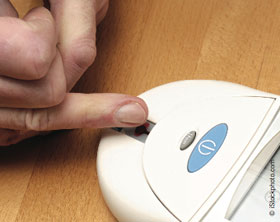Home INR testing in patients taking warfarin was associated with similar event rates as monthly high-quality clinic testing in a new study, which the authors say has “the potential for a major clinical impact”.

In the The Home INR Study (THINRS), (N Engl J Med 2010;363:1608-20), weekly self-testing did not significantly delay the time to a first stroke, major bleeding episode, or death, but was associated with improvements in time within the therapeutic INR range, patient satisfaction with anticoagulation therapy, and quality of life.
Although technically this is a negative study as the home testing was not superior to control, the authors point out that the control group was INR tested at high-quality clinics, which is regarded as the gold standard of care. As the home INR testing was equally as good, this is a significant achievement.
THINRS included 2,922 patients taking warfarin randomised to either weekly self-testing at home or monthly high-quality testing in a clinic. The primary end point was the time to a first major event (stroke, major bleeding episode, or death).
The patients were followed for two to 4.75 years. The two groups had similar rates of the primary end point, although there were more minor bleeding episodes in the self-testing group. The self-testing group had a small but significant improvement in the percentage of time during which the INR was within the target range and a small but significant improvement in patient satisfaction with anticoagulation therapy and quality of life. Costs were higher in the self-testing group but not significantly different from those in the clinic-testing group.
